One of the trickiest parts of owning a business is managing money. A business owner always has money coming and going and it can be difficult to keep track of what you really have at the moment, much less plan what you’ll have next week.
There’s so much to keep track of, for example:
| Money coming in | Money going out |
| • Cash sales • Checks that need to be deposited • Loans |
• Buying supplies • Paying employees/contractors • Paying for marketing • Repaying loans |
Because of these regular financial activities, your bank balance may always be bouncing up and down. How can you make sure that you’ll have enough money to pay the next expenses that are coming up? Maybe you’ll have a lot more money next week than today, so you should hold off on buying something now. On the other hand, it’s often cheaper to buy in bulk, but if you buy all of your supplies now will you end up with an overdrawn account?
It’s good to have a budget at the beginning of the year but if you are a small business owner, managing your money better is a great resolution any time of the year. And if you don’t have a budget, you’re not managing your money as well as you could.
Think of it this way: Operating without a budget is like driving without GPS. You may reach your destination, but you may get lost along the way. A budget can help you to “drive” your company towards profitability – and it can keep you from ending up in a financial accident. Profitability may be one month away, one year away or three years away; however close it is, a budget will help you know that you’re headed in the right direction.
Usually people budget a month at a time. A month is long enough to plan and has the benefit of also being how often many bills are due. Monthly planning allows you to make seasonal adjustments – for example, if your business is mowing lawns, you’ll make a lot more money in the summer; and if it’s shoveling snow, you’ll make more in the winter.
What is a budget document?
You’ll be using your budget both for planning and as a working document to keep track of your monthly activity. A budget does not have to be extremely sophisticated. In fact, if you write it on a napkin with a pencil, that’s a budget.
However, we’d strongly suggest using a spreadsheet for your budget. A spreadsheet (like Microsoft Excel™ or Google Sheets™) does the math for you. More importantly, as numbers change over time, spreadsheets automatically recalculate changes down the line. That is to say, if you estimated that your monthly gasoline costs are $30 and they go up halfway through the year, a spreadsheet will automatically figure that increase into your annual cost for gasoline. You can also use a spreadsheet to conduct “what if” experiments. What if you pay someone a dollar an hour more? What if you charge 50 cents more for each item? Spreadsheets let you quickly figure out the cons
You may or may not have Excel installed on your computer. If you don’t, Google Sheets is free – and it offers a simple budget template for free.
There are other templates you can use. Nerd Wallet offers a guide to free budget templates that you can use, along with some advice for creating a budget. Some are more complicated than others, but the templates have built-in instructions for using them. You will need to play around with them to get comfortable with them and you may want to get a parent’s help.
Remember, having a budget is like traveling with Waze or Google Maps (or whatever you use). You are less likely to get lost if you have it.
Building the budget
Before we get to creating an actual budget, let’s look at questions you should be asking yourself. You will see that some of these questions may take some experience to answer; in other words, you may need to have your business up and running for a few months before you can really answer them.
That does not mean you cannot start out with a budget based on your best educated guesses. But as you begin to see how close your guesses were to reality, you can firm up and fine-tune your budget.
There are five basic questions to begin with:
- How much money do you have to start with?
- What are your costs?
- What will you charge?
- How much can you sell?
- How much will you make?
- How much money do you have to start with?
Every budget begins by taking stock of what you have. In your case, that might mean birthday money, money saved from chores, or even loans from your family. The amount of money you start with will help you to determine how spending can best grow your business. If you have enough money to buy in bulk, maybe it’s best to get extra supplies now. On the other hand, maybe those supplies will spoil if they are not used. Similarly, maybe you can afford to hire a friend to help you with your business, but you’ll have to make sure that whatever the friend costs you will be made up by the extra they help you earn. All of these are complex questions you don’t need to answer yet, but they are good to keep in mind as you figure out what you can afford.
- What are your costs?
There’s an old saying, “it takes money to make money”. As you run your business you’ll find that there are always going to be costs. Understanding and anticipating these costs will help you to get ahead, which is why this is the next stage of budgeting.
There are two basic types of cost. The first type are what we call “fixed costs”, which are things that will cost you no matter how much you sell. For example, the supplies that you need to get started such as a snow shovel or maybe a computer printer. Another kind of fixed cost is something that you’ll have to pay no matter what, for example the web hosting charge for your ecommerce website. If you pay back a loan every month, that monthly charge is a fixed cost. These costs are not expected to change much based on what your company does in a month.
On the other hand, every business also has “variable costs”, which are the things that depend on what your business does in some time period. For example, in March you may sell more cookies than in February, so in March you may need to spend more money on sugar and flour. If your business is cutting lawns, you may have more customers in June than in November. So in June you’ll probably spend more on gasoline for your mower. These costs are all directly related to what kind of work you are doing and to how many customers you have in a period.
(You might want to take a look at our start-up page to get a better idea of some of the other costs you might incur while starting a business.)
And don’t forget hidden costs. For example, if you use your car for your business, try to estimate how much extra gas you are buying for business-related trips, or how much more often you have to wash it. Do you usually buy lunch when you’re driving around town working? Be sure to add that in.
Finally, it is extremely wise to add to your variable costs money you put away each month for a savings/emergency fund for the future. You don’t know what the future holds but there may be – and probably will be – unpleasant surprises.
- What will you charge?
Figuring out the right amount to charge is as much art as science. What kind of customers are you going after? Are they rich or poor? What will they expect to pay for similar items? Is there something special about your product or service that makes it worth more? Will you need to start out cheaper in order to get customers? Or does a low price risk telling people that what you offer isn’t very good?
Deciding what to charge is called “pricing,” and it is very complex. We have books on the theory of pricing that are hundreds and hundreds of pages long. But it all boils down to picking a number. The good news is that if the number you pick doesn’t work, you can always change it.
A benefit to budgeting is that when you use a spreadsheet like Microsoft Excel™ or Google Sheets™, you can play with the numbers. Try different prices to see what that does to your budget.
- How much can you sell?
You’re going to have to make some guesses here, but keep them realistic. It’s easy to imagine getting rich: just sell a million cookies at a dollar each. But can you sell a million cookies? How much can you expect to sell in each month? There are a lot of guesses involved. Here are a few things to keep in mind when you are trying to estimate your sales:
- How will you reach your customers? Will this be word of mouth, or will you be advertising somewhere?
- Of the people you reach, how many can you expect to want what you are selling? Remember this will depend on whether what you offer is going to be exactly what they want. For example, if you are selling sugar-free candy you will convert a higher rate of people to customers if you are advertising to diabetics than if you are advertising more generally.
- Does what you are selling require planning and thought, or is it more like an impulse buy? If you are selling something inexpensive like candy then your customers won’t need to spend a lot of time thinking about the purchase. However, higher-cost items like a website will probably take longer as customers research and consider what you are offering.
- How much revenue will you make?
We’re not talking about profit, the money left over after expenses are subtracted. That’s the good news that comes later. Before we can count our profits we need to start by figuring out the total amount of money your business will make every month. Anything that your business does that brings in money for either sales of goods or services will count towards revenue.
Your revenue amount is based on how many goods you reasonably can expect to produce each month or how much services you expect to provide with the number of workers you have (you may be the only worker). Then you multiply that by the cost of each good or service to calculate your monthly revenue. Basically, multiple items #3 and #4 above.
Put all the months together and you have your annual revenue projection.
Putting it all together
This all sounds complicated but, by this point, you’ve already done all the hard work. Now that you’ve figured out your costs and your revenue, just subtract those costs each month from that month’s revenue. What’s left will be your monthly profit (or loss). At the end of the year, you have your annual profit (or loss).
If the numbers aren’t favorable then you’ll have to decide what to do. You can try different prices for your goods and services. You may need to rethink your business plan and offer different items. One thing we do not recommend is changing your sales assumptions. It’s tempting to tell yourself that you can just sell more, but if you already set your sales expectations realistically then any changes you make now will just be fantasy.
You may decide that the business is just not profitable. Keep in mind, though, that some businesses may take time to turn a profit. Even if you lose money but your monthly loss gets lower and lower each month, you might eventually earn a profit. You might want to stick it out.
Also keep in mind that some businesses may not show a profit until the Christmas holidays, when a lot of people buy stuff as gifts. (That’s why they call the day after Thanksgiving “Black Friday” – a lot of businesses don’t make a profit, or “go into the black,” until Christmas shopping starts in earnest.)
Anyway, the only way to tell if you have the potential for a profitable business is to create your actual budget document. That will be the GPS to make sure you are headed in the right direction.
Photo by Sharon McCutcheon on Unsplash





